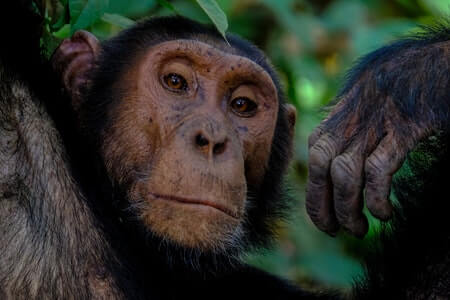Apes are some of the most fascinating creatures on earth. They’re very similar to humans, but there are a few key differences. One of these is that apes don’t have beards. This might seem like a minor difference, but it actually has to do with the way their hair grows.
Let’s take a closer look at why apes don’t have beards and what this means for their appearance.
An ape’s hair grows differently than a human’s. It doesn’t grow long because it has a different texture and shorter growth cycles. While humans’ hair can grow for about six years, apes only let their hairs grow for two or three months before falling out and being replaced by new ones. As such, they don’t have as much facial hair as humans do.
What this means is that even if an ape wanted to grow a beard as many men do, it just wouldn’t work due to the nature of its own hair growth cycle and the fact that it grows slowly in general.
Do apes grow facial hair?
Facial hair, such as mustaches, bushy eyebrows, and beards, has evolved in primates to assist them to identify each other in wooded areas.

Most ecologists believe that primates engage in a lot of face-to-face interactions, as they are a visual society. Because of this, it is believed that they use their hair to identify each other.
This helps them in many different regards, such as avoiding inbreeding and helping the young members of a group know who their parent is.
Why do primates have hairless faces?
Most people might think that because great apes are also humans’ closest relatives, they would look a lot like us. However, they don’t. One big reason for this has to do with their very different living environments than ours.
Primates live mainly in trees while humans spend most of their time on land or living near water sources. That means that these animals evolved over millions of years without human interference so they could better survive in the wild based solely on instincts and innate abilities.
When it comes to growing and grooming hair, the individuals who were most effective at doing so passed on their genes more than those who couldn’t. Over time, this made them develop differently than we did.
Why do apes not have long hair?
As we stated earlier, primates evolved in environments that were very different from the ones they live in today.
Primates in general come from warm, tropical climates. One of the main reasons they evolved to become hairless was to keep cool in such hot environments. This is why most of them today live in jungles and rainforests rather than colder regions.

Over time, they have also developed features such as bigger brains and nails instead of claws to help them survive better under these new circumstances. This also applies to how they groom themselves and what kind of hair length evolves naturally based on their environment’s needs.
Those that did evolve longer and thicker coats were better adapted to living in cooler regions, like chimpanzees who can be found in arctic areas.
Do apes have Moustaches?
While both male and female great apes grow bristly hairs on their upper lips that can resemble a mustache, these typically aren’t thick enough to be considered such when compared with those of humans.
All primates with visible faces (mustaches included) usually grow shorter hairs around their mouths and noses to help protect them from extreme weather conditions and to provide easier grooming. However, the hair around their mouths is usually shorter than that of a human’s beard.
They also develop them at different times than people do.
Which animals have beards?
One feature all primates share, both those who live near water sources as well as those who live in trees, are spiny hairs around their faces.
From goats to lions, these furry friends all have something in common: luxurious beards that set them apart from the rest.

These help them move around better when they’re climbing or swinging from branch to branch because it provides more grip on these surfaces.
Animals that have beards include the following –
- orangutans,
- goats,
- lions,
- bison,
- pandas,
- beavers
Those hairy beasts all have a great deal of facial hair that’s useful for protecting them from weather conditions and for grooming.
What about the Great Apes?
They do have hair around their mouths, but it isn’t very thick so it doesn’t qualify as a beard in terms of how we perceive beards in humans.
The short hairs surrounding the mouth serve a similar purpose to human facial hair, but they also provide better grip when climbing trees or swinging from branch to branch.
In addition, when compared with other mammals who live in colder climates – such as pandas, bison, and goats – primates are much more likely to keep themselves warm by hugging trees or each other.
Final Thoughts
It’s thought that most male primates grow facial hair as a secondary sexual characteristic, like the manes of other male animals. However, just why humans are the only ones to have developed significantly longer and thicker beards aren’t clear.
There’s a chance that growing thicker facial hair for humans was a random mutation with no evolutionary benefit.
Furthermore, being able to grow thicker facial hair might not actually increase one’s attractiveness to another human unless they too were capable of growing very thick facial hair.
It may instead be part of what makes someone appear more aggressive during times of increased stress or periods of competition between individuals because long whiskers can make them look larger in size.
This might also help the hair stand on end in colder climates, which could assist with keeping warm.
